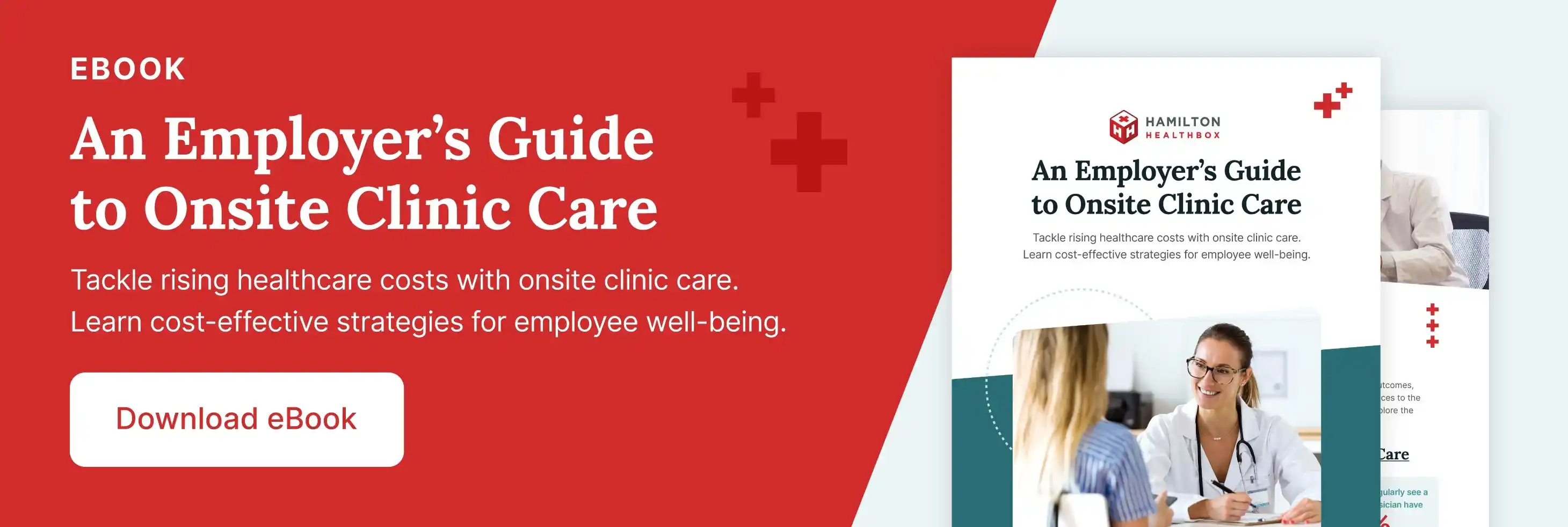
Primary care is fundamental to health and wellness. Yet providing sufficient primary care resources and garnering engagement from the populations served has proven difficult for many healthcare stakeholders. With this in mind, this blog explores the role primary care plays, several considerations for improvement, and examples of innovative primary care programs serving employers and health plans.
What Is Primary Care and Why Is It So Important?
Primary care covers a spectrum of services around day-to-day health and wellness. As noted by the American Academy of Family Physicians, primary care encompasses health promotion, disease prevention, health maintenance, counseling, patient education, diagnosis, and the treatment of acute and chronic illnesses.
The ultimate goal of primary care is to provide accessible, coordinated, high-quality care that improves health outcomes and prevents more costly downstream healthcare costs. And overwhelming evidence supports the fact that patients who receive regular primary care services experience better health outcomes and use hospitals and emergency departments less frequently. American adults who have regular access to a primary care physician have 19% lower odds of dying prematurely than those who see only a specialist.
Primary care services not only help people stay healthy, but they also can play an important role in the early detection of disease to avoid more acute conditions that require advanced services. According to the Centers for Disease Control and Prevention, more than 100,000 lives could be saved annually if people received recommended screenings.
Despite the critical impact of primary care services, many Americans fail to use them. A 2021 survey found that although 91 percent of respondents believed that primary care is important, almost a quarter (24 percent) had not received any such care in the previous year. A Kaiser Family Foundation national poll of 1,200 randomly selected adults found that 26 percent of those polled did not have a primary care provider.
100,000+ lives
could be saved annually if people received screenings.
How Can Primary Care Utilization Be Improved?
There are many reasons people fail to seek preventive services, from not having a dedicated healthcare provider to cost concerns to lack of insurance. But a significant hurdle to seeking basic care often comes down to something that should be easier to tackle: convenience. For many people, taking time away from work and traveling to a physician’s office can be difficult, if not impossible.
The irony is that when individuals fail to use primary and chronic care services, they often end up needing to miss more work for illness—and as a result, their work productivity lessens, and they will often incur higher medical expenses for health conditions that could have been prevented or treated in less intensive settings.
Because of this dynamic, many healthcare stakeholders are looking at the use of onsite care to overcome this barrier. Consider the following examples of innovative primary care.
Employer Clinic Solutions
According to the National Association of Worksite Health Centers (NAWHC), an onsite employer clinic is a “setting where an employer or union offers one or more medical and wellness services, delivered by licensed providers, to all or a designated portion of its active population and other eligible individuals.”
But to be clear, employer clinics can do much more than provide occupational health and first aid. There are a variety of ways onsite care can be structured, both in service offerings and delivery mechanisms. These variations depend on the employer’s goals and employees’ needs.
For example, many employers are finding success with a hybrid approach to onsite primary care that brings together the best of face-to-face visits and telehealth. Blending the personalization of onsite care, whether in a private meeting room, nearby storefront, or mobile unit, with the convenience of telehealth gives employers opportunities to increase the amount and type of care available to employees.
Healthbox™ (HHB), which offers onsite primary care solutions, takes this approach. Their employer clinic model provides a complete primary care experience in models that can be right-sized for the employers’ needs. While many companies work with HHB to provide a full–time 40-hour a week clinic, other employers with less need can opt to purchase a part-time clinic open for 20 hours a week.
In the Healthbox™ employer clinic model, clinicians provide all the services traditionally offered in a doctor’s office, such as in-clinic blood draws, annual wellness exams, vaccinations, standard X-rays, and more. In addition, mental health services, imaging, chronic care management, and other services are available. At the same time, employees have access to virtual urgent care 24/7/365 via telemedicine, which means they will have more access to physicians and less need for emergency services, thus better meeting medical needs and lowering the overall cost of care.
Results thus far with employers working with Healthbox™’s innovative primary care model have been notable. Successes have included:
|
$75 |
3.5x |
37% |
Onsite Clinic Companies Provide Primary Care at Universities
Another innovative primary care model is taking place at some educational institutions. Like many Americans, employees and students at universities don’t always make use of their medical benefits as much as they should. However, within those educational institutions, distinct communities of faculty, staff, and students have different needs. On their own for the first time, many college students are experiencing new health risks that arise from living in close quarters, experiencing high levels of stress, or being exposed to alcohol and drugs. Faculty and staff, on the other hand, may be managing chronic illnesses or family issues.
The struggle universities have often faced is meeting the needs of all populations while fostering engagement Traditionally, the focus on campuses may have been unfairly weighted to urgent care, with gaps in overall health management and difficulty keeping pace with ever-changing public health policies and standards.
When routine medical care falls behind, the result is often managing conditions that could have either been prevented or treated more cost-effectively. This expense can be considerable for the educational institution. Here, too, onsite care backed by telehealth, whether through a dedicated building, private mobile unit, or even well-placed kiosks, can have a significant impact on the use of health care.
Among faculty and staff, the right onsite clinic offering can result in lowered and more predictable total costs of care and decreased absenteeism.
With the student community, the right onsite services backed by strong virtual support can lead to better whole-health care that supports a positive campus experience for students, including easy access to mental health services to help students manage educational and personal stressors and better access to wellness services, such as immunizations, to support campus public health.
Onsite clinic companies like these are helping universities — and employers — create a new level of reach with effective clinical services. And, best of all, the approach can be very targeted. This model for innovative primary care can be customized not only for the type of end user but also for the quantity of service hours needed. The availability of both full- and part-time onsite clinics makes these solutions appealing at any scale.
Proven Success with Healthbox™ Onsite Clinics
As healthcare stakeholders look for ways to make primary care accessible, different variations of onsite care are proving to be a powerful way to improve health. Whether initiated by an employer, health plan or university, mixing face-to-face meetings with telehealth within novel settings, such as private offices, mobile units, and microclinics, is making it easier for clinicians and patients to meet conveniently and overcome traditional barriers to primary care.
Learn More About Expanding Your Primary Care Offerings
Healthbox™’s low-overhead operating models enhance human connection and care. Click here to learn more about Healthbox™.


